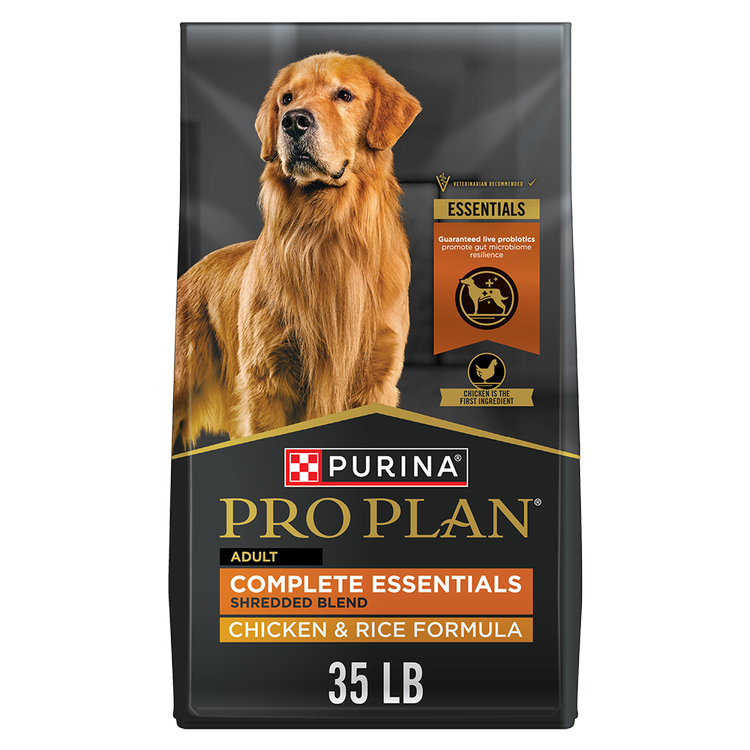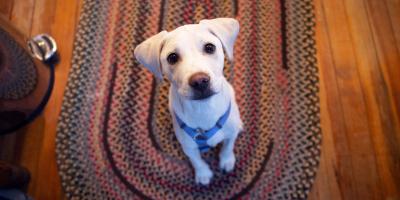Can Dogs Eat Chocolate? A Guide to Safety


Long story short: No, dogs cannot eat chocolate. We might think that a little bit of chocolate is OK for our furry friend, especially during celebrations and holidays, such as Christmas or Halloween. However, at the end of the day not all human foods are created equal. This includes chocolate which is toxic for dogs.
These days, we know that there are certain factors which can determine how much chocolate a dog can eat and the severity of chocolate toxicity. This includes the type and amount of chocolate that was consumed along with the weight of your dog. So, if you are wondering, Is milk chocolate bad for dogs? or Can dogs eat white chocolate?, the best practice overall is to keep dogs and chocolate separate so that a medical emergency does not occur.
Why is Chocolate Bad for Dogs?
Chocolate contains the methylxanthine compounds, theobromine and caffeine, which dogs are more sensitive to than humans. Since dogs process these compounds slowly, this can lead to a buildup of theobromine and caffeine in their bodies creating increased levels of toxicity. These types of chemicals in chocolate can speed up your buddy’s heart rate and stimulate their nervous system causing chocolate poisoning in dogs.
How Much Chocolate is Toxic for Dogs?
When it comes to chocolate toxicity, the darker and more bitter the chocolate, the more toxic it is to dogs. For example, a 40-pound dog could become just as sick from eating 1 ounce (about 28.35 g) of baker’s chocolate as they could from eating 8 ounces (about 226.8 g) of milk chocolate. That is because the concentration of toxic compounds varies among different types of chocolate. To get a better idea, here is a list of several types of chocolate in order of their theobromine content:
- Cocoa beans/Cocoa powder (most theobromine and most toxic)
- Unsweetened cocoa powder/Unsweetened baker’s chocolate
- Semisweet chocolate
- Dark chocolate
- Milk chocolate
- White chocolate (least theobromine and least toxic)
Even if the chocolate toxicity levels are not that high, dogs can still develop vomiting, diarrhea or pancreatitis purely from the fat and sugar content in the chocolate itself. Therefore, it is always good to call a vet if you suspect your dog ate chocolate.
Knowing what kind of chocolate your dog ate and how much they ate will help you and your vet determine if your dog has an emergency.
The following chart shows the minimum amount of chocolate that must be consumed before mild chocolate poisoning occurs. This chart is in accordance with a dog’s weight and which type of chocolate they ate:
| Type of Chocolate | Minimum Amount of Chocolate That is Toxic According to a Dog’s Weight | Minimum Amount That Can Be Toxic to a 30 lb. Dog |
|---|---|---|
| Cocoa beans/Cocoa powder (most toxic) | 1 oz (28.35 g) of this chocolate starts becoming mildly toxic to a dog around 236 pounds. The smaller the dog, the higher toxicity levels they will experience. | 0.1 oz (or 2.83 g) |
| Unsweetened cocoa powder/Unsweetened baker’s chocolate | 1 oz (28.35 g) of this chocolate starts becoming mildly toxic to a dog around 129 pounds. The smaller the dog, the higher toxicity levels they will experience. | 0.13 oz (or 3.69 g) |
| Semisweet chocolate | 1 oz (28.35 g) of this chocolate starts becoming mildly toxic to a dog around 46 pounds. The smaller the dog, the higher toxicity levels they will experience. | 2 oz (or 56.7 g) |
| Dark chocolate | 1 oz (28.35 g) of this chocolate starts becoming mildly toxic to a dog around 44 pounds. The smaller the dog, the higher toxicity levels they will experience. | 3 oz (or 85.05 g) |
| Milk chocolate | 1 oz (28.35 g) of this chocolate starts becoming mildly toxic to a dog around 18 pounds. The smaller the dog, the higher toxicity levels they will experience. | 5 oz (or 141.75 g) |
| White chocolate (least toxic) | 4 oz (113.40 g) of this chocolate starts becoming mildly toxic to a dog around 1 pound. The more chocolate ingested, the higher toxicity levels they will experience. | 280 oz (or 7937.87 g) |
Regardless of the amount of chocolate your dog has eaten, it is always best to contact a vet to double-check if your dog will be alright or if they will need to be treated for chocolate toxicity.
Symptoms of Chocolate Poisoning in Dogs
Signs of chocolate poisoning in dogs can occur within the first 24 hours, so keep a close eye on your pup if you suspect that they ate chocolate. What happens when a dog devours chocolate could include the following:
- Restlessness
- Tremors
- Weakness
- Panting
- Increased thirst
- Vomiting
- Diarrhea
- Frequent urination
- Low blood pressure
- Increased rate of breathing
- Irregular heart rate
- Cardiac failure
- Internal bleeding
- Seizures
- Loss of consciousness
- Coma
You might get lucky and only experience your dog vomiting the chocolate up quickly before it progresses to more serious symptoms. However, always reach out to a vet as soon as possible to have your pet assessed for treatment and care.
What to Do if Your Dog Ate Chocolate
If we see our dog sneak some chocolate, our first reaction might be, My dog ate chocolate! What do I do? If you notice or suspect that your dog has eaten chocolate, it is important to follow these steps as soon as possible even if they are not showing any symptoms yet:
- Keep an eye on your dog. If your buddy has eaten chocolate, it is crucial to keep a close eye on them for 24 hours or so. If you have an outdoor dog, try to keep them inside during this time to ensure that they do not develop any symptoms. Keep all doors and windows closed, watch out for your pup as you come and go from the house, and try to keep your loved one contained to one or a few main area(s) during this time.
- Contact a vet immediately and tell them all the facts that you know. If you have the candy wrapper and/or box at hand when you call, this can provide your vet with further details about the type of chocolate eaten and roughly how much your dog ate. Although your vet should have this information on record, you should still provide your vet with the size and weight of your dog. These details can determine how much danger your buddy might be in from chocolate poisoning.
- Get your dog to a vet for treatment ASAP. The sooner your dog is treated, the higher the chance they will recover without incident. After your initial contact with your vet, let them know you will be there with your dog right away. If it has been less than 2 hours since your dog ingested the chocolate, your vet might choose to induce vomiting at the clinic. Never try to do this on your own at home without the advice of a professional vet. If your dog begins to exhibit worse symptoms, then your vet will start a series of treatments, including IV fluids, gastrointestinal (GI) support, heart rate monitoring, blood pressure monitoring, antiarrhythmic drugs, and more.
- If your vet is not available, call the local emergency veterinary clinic or the Animal Poison Control Center (APCC) at (888) 426-4435. The APCC will be able to provide advice on what to do if your dog eats chocolate. Whereas, the emergency vet clinic will be set up to properly treat your dog, especially if the chocolate toxicity has become severe.
Contacting your vet and getting your dog treated right away will always be your best bet to saving your loved one from any serious or fatal long-term complications.
Healthy Snacks to Give Your Dog Instead of Chocolate
Although chocolate is among many human foods that are not good for dogs, that doesn’t mean there are not any appropriate dog treats out there that you can give them. Here is a list of treat ideas for your dog on those days you want to give them something special:
- There are many safe, approved and specially formulated dog treats that they can eat without you worrying about them getting sick.
- There are also gourmet dog treats that some pet bakeries use which have a safe chocolate substitute, called carob, your dog can eat without any cause for concern.
- There are even tasty dog bones and dog chew treats that are not only delicious for your dog but can provide them with added nutrients and dental care as well.
If you do your research, you should be able to find many healthy alternatives for your dog that they will love. The best rule of thumb is to stick with dog-approved treats made specifically for dogs. This way you can keep your best friend happy, and everyone can enjoy their special treats together without anyone getting sick.
Tips on How to Keep Chocolate Away from Your Dog
Below are a few preventative ways to keep your dog out of the chocolate jar:
- Keep the chocolate out of reach. Watch out for food that has chocolate in it, such as chocolate chip cookies, as well as purses or treat bags with chocolatey treats inside. The best thing you can do is put anything with chocolate in it in a place where you know your dog cannot reach it. This might include high up places, behind closed pantry doors, or in another place where you know your dog has never been able to get into no matter how hard they try.
- Teach them the “leave it” command. The “leave it” command is an easy to learn command you can teach to your dog that will prevent them from eating something or picking up something that they shouldn’t.
- Crate train your dog. One of the safest ways to ensure that your dog will not get into something they shouldn’t when you are not around is by crate training them. Most dogs get crate trained as puppies allowing them to learn boundaries early on.
For more expert tips on dog feeding, explore our other What Dogs Can Eat articles.
Related articles

Find Your Pet’s Perfect Food
Use our Pet Food Finder to get a custom recommendation from Purina Nutritionists.






